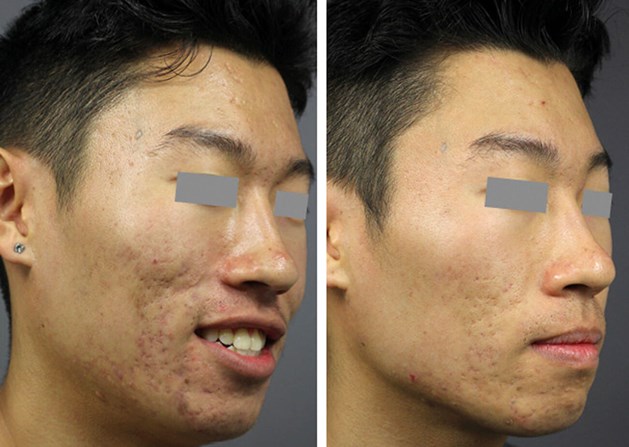How to Treat Acne Scars: Proven Approaches for a Flawless Complexion
How to Treat Acne Scars: Proven Approaches for a Flawless Complexion
Blog Article
Checking Out Skin Problem: Recognizing and Treating Acne Scars for Healthier Skin
Acne scars represent a considerable worry for individuals seeking to maintain healthy and balanced skin, as they can influence both look and self-confidence. Comprehending the various types of marks, from atrophic to hypertrophic, is essential for determining suitable treatment options.
Recognizing Acne Marks

The body's natural recovery process can result in either atrophic marks, which appear as depressions in the skin, or hypertrophic marks, which are increased and arise from overproduction of collagen. Additionally, the emotional toll of acne scars ought to not be underestimated; many people report feelings of embarrassment, stress and anxiety, and reduced self-esteem. This psychological worry can influence social interactions and general lifestyle.
Addressing acne scars needs a detailed understanding of their formation and impact. Recognition of the potential for lasting consequences connected with without treatment marks can encourage people to seek suitable therapies. Early intervention and effective administration methods can considerably enhance skin appearance and improve psychological durability, stressing the relevance of recognizing the intricacies bordering acne marks.
Kinds Of Acne Scars
Acne marks can be categorized into distinct kinds, each exhibiting unique attributes and needing particular therapy techniques. acne scars treatment. The main types of acne marks consist of atrophic, hypertrophic, and keloid marks

Hypertrophic scars, on the other hand, are increased above the skin level and are the result of too much collagen production during the healing procedure. They typically remain within the boundaries of the original acne sore. Keloid marks are similar but prolong beyond the initial injury site, forming larger, elevated locations that can be painful or itchy.
Understanding these sorts of marks is essential for choosing suitable therapy choices. Various marks might respond far better to specific treatments, such as laser treatments, fillers, or medical treatments, highlighting the importance of a tailored technique to acne scar monitoring.
Recognizing Your Marks
Acne marks typically fall right into 2 groups: atrophic and hypertrophic scars. These can even more be classified into ice-pick scars, boxcar scars, and rolling marks, each showing distinctive features and requiring different approaches for analysis.
Hypertrophic scars, on the other hand, are raised and happen as a result of extreme collagen manufacturing during the healing process. Recognizing the specific attributes of your marks-- such as width, structure, and deepness-- is crucial for appropriate recognition (acne and acne you can try this out scars treatment). Additionally, consider the circulation of marks across your skin, as this can indicate the seriousness and period of the acne condition
Engaging with a skin specialist can give important understandings right into the nature of your marks, helping in the distinction between different types. A thorough understanding of your scars will eventually lead to a much more customized and efficient treatment strategy, making certain a more clear and healthier complexion.
Therapy Alternatives Offered
Determining the specific kind of acne marks present on your skin lays the groundwork for discovering reliable treatment options. Usual kinds of acne scars consist of atrophic (clinically depressed), hypertrophic (increased), and post-inflammatory erythema.
For atrophic marks, options such as chemical peels, microneedling, and laser resurfacing are widely made use of. Chemical peels utilize acids to eliminate the outer layer of skin, advertising new cell development.
Hypertrophic marks can be treated with corticosteroid injections to squash the scar or laser therapy to minimize soreness and enhance look. Silicone gel sheets and pressure dressings may also help in handling increased scars.
Furthermore, facial fillers can briefly complete clinical depressions from atrophic marks, while surgical excision might be appropriate for extreme cases. Each therapy option has its advantages and considerations, making it important to seek advice from a skin doctor. They can give tailored suggestions based upon the type and extent of your scars, along with your skin type and overall health.
Tips for Avoidance
Reliable avoidance approaches can considerably decrease the possibility of establishing acne scars. Using non-comedogenic products helps prevent blocked pores, which can intensify acne.
Preventing the impulse to stand out or choose acne lesions is vital, as this can bring about much deeper skin damages and increase the risk of scarring. Instead, consider utilizing a cold compress or non-prescription therapies to minimize swelling and inflammation.
Sunlight defense is another important element of prevention; ultraviolet (UV) rays can darken scars and impede the healing procedure. Using Visit This Link a broad-spectrum sun block with a minimum of SPF 30 daily can protect the skin and promote even recovery.
Finally, keeping a balanced diet plan abundant in minerals, anti-oxidants, and vitamins sustains skin health and recovery. Staying moisturized and managing tension degrees can additionally play a substantial duty in minimizing acne flare-ups. By carrying out these techniques, individuals can significantly decrease their possibilities of developing acne marks.
Final Thought
In verdict, understanding and recognizing acne scars is necessary for effective treatment and accomplishing much healthier skin. Numerous kinds of acne marks, including atrophic and hypertrophic scars, demand specific interventions tailored to private requirements.
The body's all-natural recovery procedure can result in either atrophic marks, which show up as depressions in the skin, or hypertrophic scars, which are raised and result from overproduction of collagen. They are additional split right into 3 subtypes: ice choice marks, boxcar marks, and rolling scars. Acne scars typically fall right into 2 groups: hypertrophic and atrophic marks. These can better be classified right into ice-pick marks, boxcar marks, and rolling marks, each exhibiting distinct characteristics and requiring sites different techniques for evaluation.
Different types of acne scars, including atrophic and hypertrophic scars, require particular interventions tailored to individual needs.
Report this page